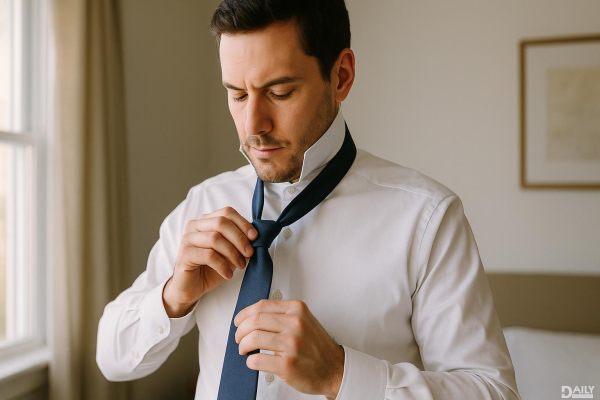Finding the perfect suit isn’t just about looking sharp—it’s about feeling like a million bucks while avoiding that dreaded "stuffed sausage" vibe. Whether you're suiting up for a wedding, a big interview, or just because you want to elevate your everyday style, nailing the fit is everything. From shoulder seams to trouser breaks, here’s how to make sure your suit game is on point.

If the shoulders don’t fit, nothing else matters. A well-fitted suit jacket should hug your shoulders without pulling or sagging. The seam where the sleeve meets the body should sit right at the edge of your shoulder bone—not hanging off like a deflated balloon or digging in like a straitjacket. Pro tip: If you raise your arms slightly and the whole jacket lifts like you’re doing the robot, it’s too tight. On the flip side, if there’s enough extra fabric to stash a sandwich, it’s too big. Most off-the-rack suits won’t get this 100% right, so don’t be afraid to visit a tailor for minor adjustments.
You want your jacket to skim your body, not squeeze it or swim on you. Button the top button (or middle button for a three-piece suit)—if the fabric pulls into an "X" shape, it’s too tight. If you could fit a small dog between the jacket and your chest, it’s too loose. The waist should taper slightly to give you shape without looking like you’re wearing a corset. For a modern look, aim for about an inch of space between the jacket and your body when buttoned. And remember: A good tailor can take in the sides, but they can’t magically add fabric if it’s too snug.
Your jacket sleeves should end right where your wrist meets your hand, showing about a quarter to half an inch of your dress shirt cuff. This isn’t just for aesthetics—it keeps your shirt from getting dirty while you’re out and about. If your sleeves are too long, you’ll look like a kid borrowing dad’s blazer. Too short, and you’ll give off "outgrew my suit" vibes. Most department store suits have unfinished sleeves, so a tailor can easily adjust them. Just don’t go hacking at them yourself unless you’re going for the distressed look (which, FYI, doesn’t work for suits).
Let’s talk pants. The waist should sit comfortably without needing a belt to hold them up (though you should still wear one). If you’re sucking in your gut just to button them, size up. The seat shouldn’t sag like old sweatpants or cling like leggings—there should be enough room to sit without feeling like you’re in a straightjacket. As for length, the modern sweet spot is a slight break (where the fabric just kisses the top of your shoes) or no break for a sharper look. Avoid the "flood pants" effect unless you’re auditioning for a 1940s newsboy role.
Before you commit, do a movement test. Sit down, reach for the sky, cross your arms—if the fabric pulls, wrinkles, or rides up in weird places, it’s not the right fit. A great suit should move with you, not against you. And don’t forget to check the back: The collar should lie flat against your neck without gaping. If it looks like you’re storing a tennis ball under there, it’s a no-go.
At the end of the day, the perfect suit is like a second skin—it should make you stand taller, walk with confidence, and maybe even convince people you’ve got your life together (even if you don’t). Whether you’re buying off the rack or going custom, remember: Fit trumps brand names every time. Now go forth and suit up like you mean it.
























